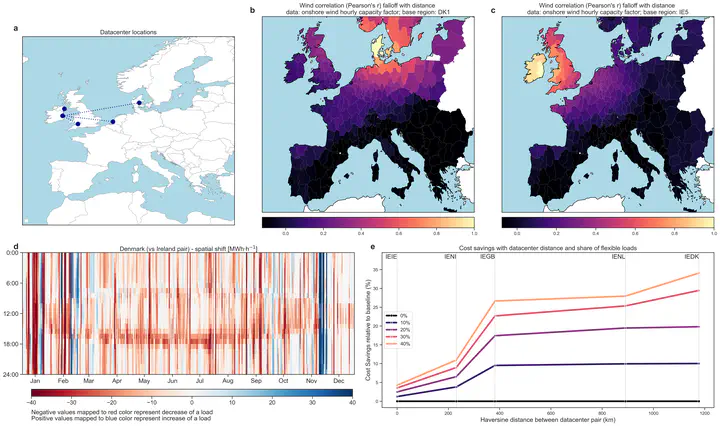Spatio-temporal load shifting for truly clean computing

Abstract
Companies with datacenters are procuring significant amounts of renewable energy to reduce their carbon footprint. There is increasing interest in achieving 24/7 Carbon-Free Energy (CFE) matching in electricity usage, aiming to eliminate all carbon footprints associated with electricity consumption on an hourly basis. However, the variability of renewable energy resources poses significant challenges for achieving this goal. We explore the impact of shifting computing jobs and associated power loads both in time and between datacenter locations. We develop an optimization model to simulate a network of geographically distributed datacenters managed by a company leveraging spatio-temporal load flexibility to achieve 24/7 CFE matching. We isolate three signals relevant for informed use of load flexiblity – varying average quality of renewable energy resources, low correlation between wind power generation over long distances due to different weather conditions, and lags in solar radiation peak due to Earth’s rotation. We illustrate that the location of datacenters and the time of year affect which signal drives an effective load-shaping strategy. The energy procurement and load-shifting decisions based on informed use of these signals facilitate the resource-efficiency and cost-effectiveness of clean computing—the costs of 24/7 CFE are reduced by 1.29±0.07 EUR/MWh for every additional percentage of flexible load. We provide practical guidelines on how companies with datacenters can leverage spatio-temporal load flexibility for truly clean computing. Our results and the open-source optimization model can also be useful for a broader variety of companies with flexible loads and an interest in eliminating their carbon footprint.